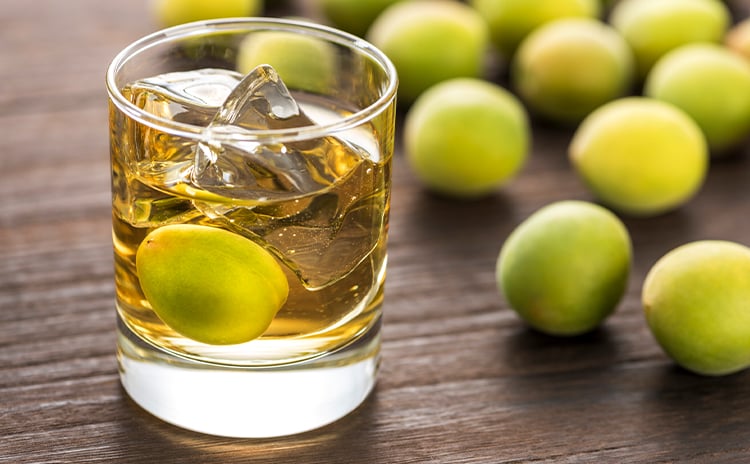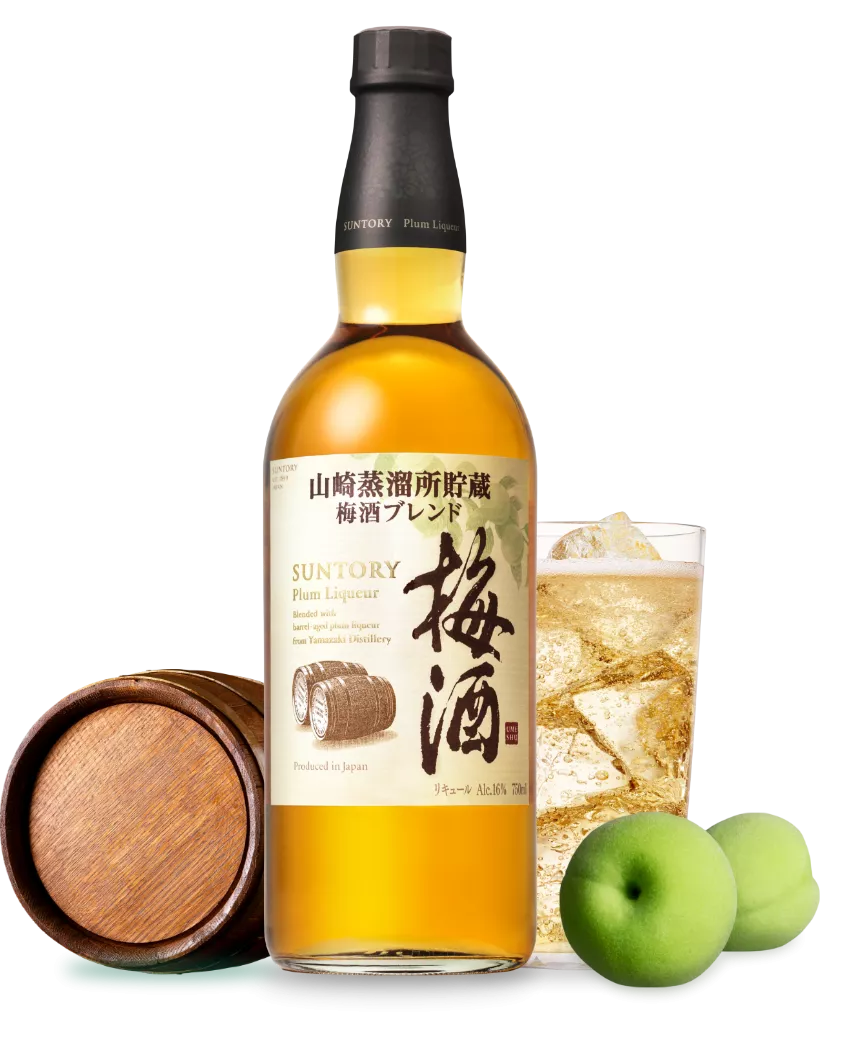
It’s no secret that the Japanese love a good drink. While there are exceptions, of course, there’s no denying that alcohol plays a big role in many people’s lives in Japan. From nomikai (飲み会 drinking parties) to the plethora of nomihoudai (飲み放題 all-you-can-drink) options, there are plenty of opportunities to indulge.
If you’d like to approach drinking in Japan on a more traditional level, you’ve probably thought of trying Japanese sake, or nihonshu (日本酒) as it’s called in Japan. As someone who’s ordered her fair share of this at her work nomikais, I encourage you to do so, too!
However, I’d like to make you aware of another perhaps lesser-known alcoholic beverage that is in many ways as quintessentially Japanese as Japanese sake: umeshu (梅酒). This drink may be lesser-known abroad, but in Japan there’s no adult who doesn’t know what this is. Indeed, you can find this option in restaurants that serve alcohol about as often as beer shows up on menus in the West. This drink is characterized by its sweet and sour taste, and hovers between a 10 and 15 percent alcohol content.
How it’s made
Umeshu’s name can tell you a lot about what it is. 梅 means ‘plum’ (specifically a variety of Japanese plums) and 酒 means ‘alcohol’. If the name reminds you of umeboshi (梅干し) – Japanese pickled plums – you’re onto something! The same kind of plum is used to make both, however they are pickled in the latter’s case. In order to make umeshu, however, these plums are steeped in a concoction of rock sugar and distilled liquor for at least a year. Both ingredients can be found easily in Japan, however the unripened plums used for making umeshu are most readily available in June, so this is the most popular time to start a batch.
To make umeshu, green plums are washed, dried, and destemmed before being placed in a large airtight container with rock salt and distilled liquor. Most umeshu is made using shōchū (焼酎). As the process unfolds, it’s important to give the container a shake about once a week until the rock sugar has dissolved completely. Eventually, around the 1-year mark, the plums should be removed, as they can actually reabsorb the essence that was extracted during the steeping process. This can weaken the flavor of the umeshu – definitely not what you want!
Umeshu is a popular home brew in Japan, as it is said to be a very forgiving alcohol to make. One reason for this is that the high alcohol content in which it is made largely prevents mold from growing and thus spoiling it. This, however, is why ensuring that every plum is thoroughly dried before beginning is so important; any moisture left behind increases the chances of this happening.

Ways to Order
Congratulations! Your home-brewed umeshu is ready! Now the question becomes how to drink it.
The most straightforward, and maybe best way to try it for the first time, is straight into a glass. If you’ve made a particularly successful batch, you might find there’s no need to add anything else. In my opinion, sutoreeto (ストレート), or “straight”, should be the way you drink your first umeshu. That’s because it’s a great way to enjoy it in its purest, most unadulterated form! This is an easy way to compare new varieties to previous ones you’ve tried, if you’re into that kind of thing.
But if straight turns out to not be what you’re looking for, be it for the flavor or your personal preferences, there are a few other ways that it can be served:
Rokku ロック
A classic, and for good reason! If you want a similarly bare bones experience as drinking it straight, this is another good option. Rokku just means “on the rocks”. You’ll be served umeshu over ice – that’s it! Just keep in mind that the ice will, of course, melt over time, eventually diluting the flavor of the umeshu a bit.
Sodawari ソーダ割
Summer calls for sodawari umeshu! Wari (割り) means “mixed with”, so this is just umeshu mixed with sparkling water and served over ice. I always imagine drinking this refreshing version outside on a beautiful summer day. I won’t tell if you drink it some other time, though!
Mizuwari 水割り
If you find the taste of umeshu to be a bit strong for your liking, give mizuwari a try. Mizu (水) means “water”, so combined with wari, you get “mixed with water”. This ensures a much mellower, subdued flavor.
Ochawari お茶割
Similar to the previous option, this is another way to enjoy your umeshu with a softer flavor. In this case, it’s mixed with tea. The tea can vary depending on the individual person or establishment, but some popular options are green tea, jasmine tea, Oolong tea, and black tea.
History
Umeshu has a lengthy history, dating back to the beginning of the Edo period which ran from (1603-1868). It’s actually mentioned in multiple works of literature both at the beginning and in the middle of this time period. Given Japanese plums’ short shelf life, both transforming into umeshu and pickling them to make umeboshi (梅干し) were ways that people managed to preserve this finicky fruit so that it could be consumed long past being harvested. However, sugar was prohibitively expensive for the common Japanese person, so umeshu was seen as a drink of the upper class.
As time went on, of course, the price of sugar fell, and umeshu has since become a staple. You can find it on virtually any Japanese bar or izakaya’s (居酒屋 Japanese-style bars) menu, and even Japanese convenience stores offer their own options. (Pro tip: in the summer months, many convenience stores offer sealed cups of ice which you can buy along with a small container of umeshu. You’ve now got an easy umeshu on the rocks!)
Going beyond the standard umeshu
The fun doesn’t have to stop at umeshu! Go to most izakaya and you’ll probably see other fruit liqueurs for sale. Some of the most common include yuzushu (ゆず酒 yuzu liqueur, which is a citrus commonly found in east Asia), momoshu (桃酒 peach liqueur), and mikanshu (みかん酒 made from mikan, which are a type of mandarin), among others.
So, the next time you find yourself tired of the usual draft beers and sake options during a night out in Japan, remember to give umeshu a try! This sweet and sour fruit liqueur offers a unique and flavorful experience that stands apart from other alcoholic beverages. Whether you enjoy it straight, on the rocks, or mixed with soda or tea, umeshu provides a versatile drinking option that can suit various tastes and occasions. Be sure to give it a try – you might just discover your new favorite drink!















